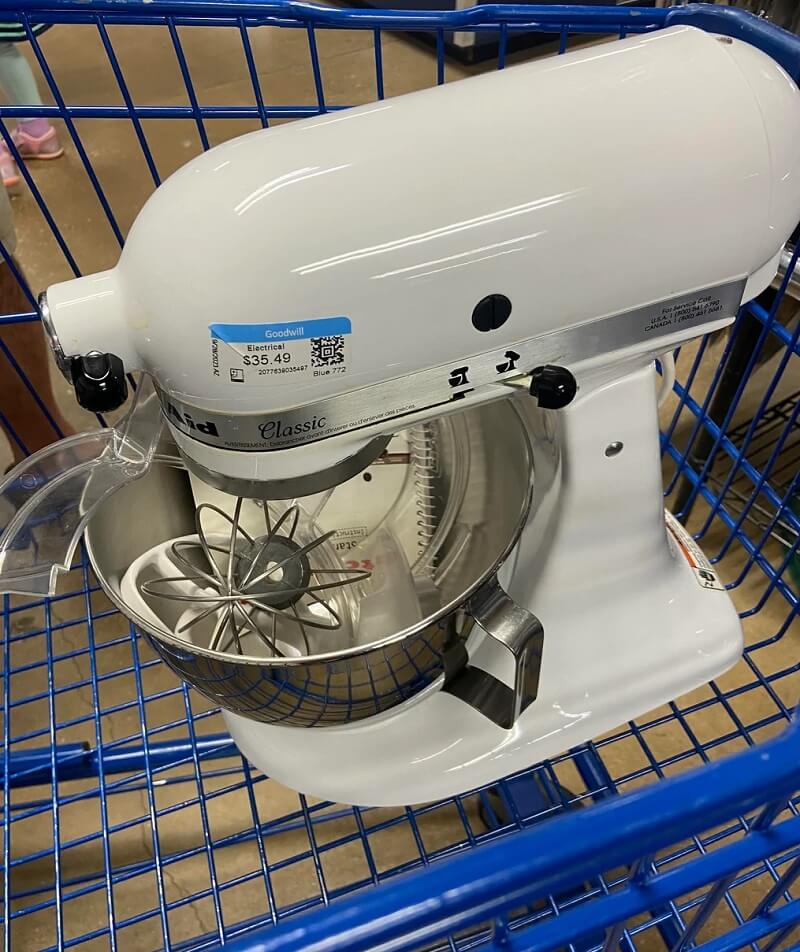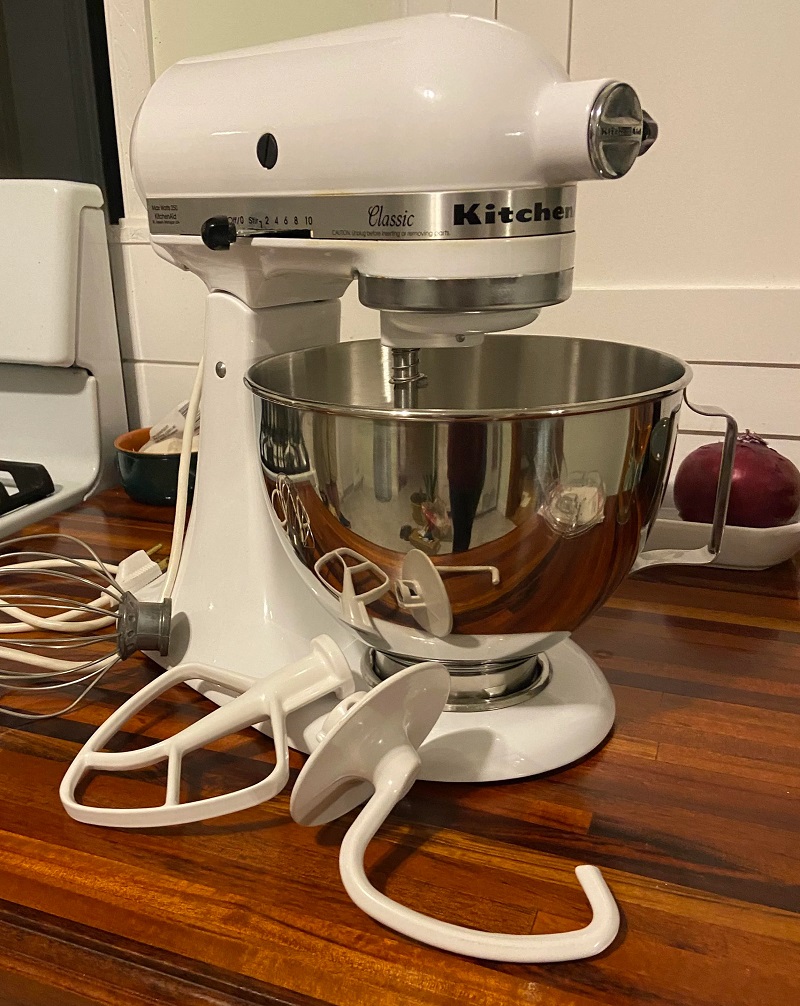A thrift shopper was thrilled to find a KitchenAid mixer in pristine condition at their local Goodwill — for about 85% off the normal price.
"Last week's white whale find! KitchenAid mixer for $36!" they wrote excitedly in the subreddit r/ThriftStoreHauls. "Came with 3 mixers, a shield, the bowl and the manual/warranty card. We're looking forward to making lots of bread and other fun things."


Fellow thrifters congratulated them on their stellar find.
"That's a [heck] of a deal! Great find!" one person wrote.
"What a steal!" said another.
Whatever you're shopping for — be it home decor, kitchen appliances, clothes, or something else — it's no secret that thrift shopping is the way to get the most bang for your buck. Thrifting enthusiasts regularly find both common, daily use, and luxury items at markdowns to the tune of 99% off their original price. (And those that are really lucky even occasionally find cash tucked away in a pocket or a purse, turning a shopping trip into an inarguably profitable endeavor.)
Not only are the savings substantial, but the quality of the items is generally better, too. Vintage products are almost always more well-made than the mass-produced, cheaply manufactured goods sold in big-box retailers.
Much of this is explained by the phenomenon of planned obsolescence, wherein companies purposefully downgrade the quality of their goods so that customers need to replace them frequently, keeping sales high. Fortunately, one of the key ways to avoid encountering planned obsolescence is by buying high-quality secondhand goods.
"My [KitchenAid] has been around for decades!" one Redditor chimed in, to which the OP replied, "That is nuts!"
🗣️ What's your primary motivation in shopping at thrift stores?
🔘 Cheaper clothes 🤑
🔘 Trendier items 😎
🔘 Reduced environmental impact 🌎
🔘 I don't thrift 🚫
🗳️ Click your choice to see results and speak your mind
And regardless of whether you're thrifting a vintage sofa or a newly made T-shirt, giving items a new life alleviates the stress of pollution that's piling on in landfills — and in oceans — around the world. With industries like fast fashion generating 100 million tons of textile waste every year, the problem has never been more urgent.
Fortunately, more and more shoppers are turning to secondhand items and enjoying higher quality rather than overpaying for cheaply made new items. According to a report from Statista, the secondhand clothing market is forecast to hit a value of $84 billion by 2030, putting it on track to outpace the fast fashion industry. Now that's worth baking something special to celebrate!
Join our free newsletter for easy tips to save more, waste less, and help yourself while helping the planet.









